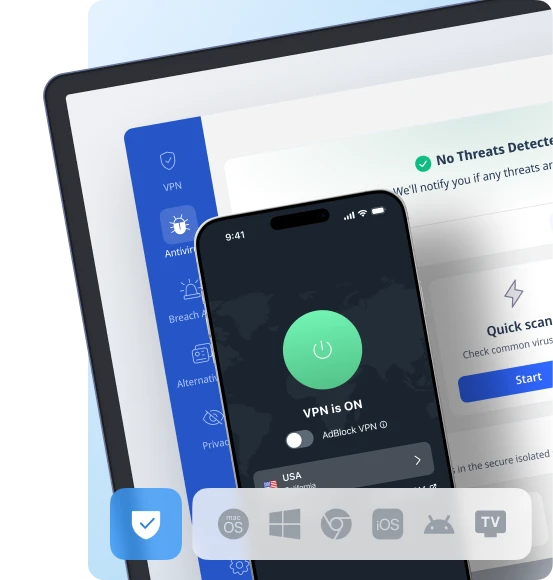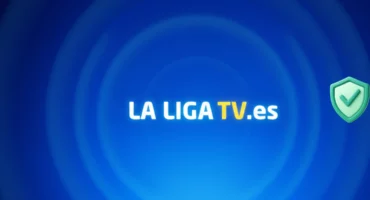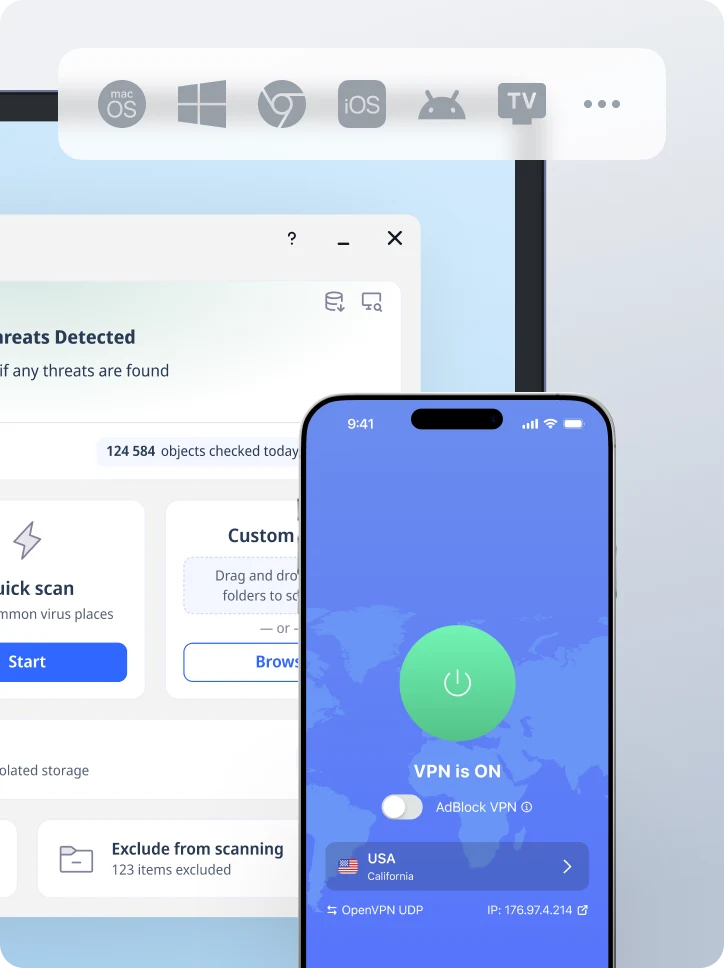How Do Privacy Screens Work and Why You Might Need One

Opening your laptop at a café feels harmless until the person at the next table zooms in on your bank dashboard. A privacy screen protector keeps those curious eyes from turning into full‑blown visual hacking, which is a threat that succeeds in 91 % of attempts, according to a 3M‑backed study.
Below, we will answer the question, “How do privacy screens work?”and why they have become an important security tool, and how to pair that physical shield with VeePN’s digital protection.
How do privacy screens work? The quick answer
A privacy screen is a slim layer (often tempered glass or plastic) etched with micro louver technology. These are the tiny vertical blinds arranged on a microscopic scale. When you look head on, light passes straight through the louvers, so screen quality stays crisp. From certain angles (usually 30–60 ° off‑center), the louvers block light, leaving only a dark panel for anyone else. This simple optical trick limits the viewing angle, protects sensitive information, and lets you work in public spaces without broadcasting your data.
Why you might need a privacy screen
Remote and hybrid work pushed screens back into coffee shops, trains, and airports, which are known hunting grounds for shoulder surfers. One cyber‑security firm documented multiple café thefts where attackers filmed logins over victims’ shoulders before emptying their bank accounts.
A February 2025 case study from Ascendant USA showed similar tactics on commuter rail lines, stressing that even “glanceable” data like subject lines can fuel spear‑phishing campaigns.
Let’s have a look at the protection measures.
Inside the privacy screen protector: micro louver magic
Now, let’s zoom in on those micro louvers and see what else hides under the hood.
- Optical design at work. The louvers act like microscopic window blinds. Each “slat” is narrower than a human hair, redirecting light so only the user in a narrow front angle gets the full picture. The farther you move sideways, the more light your eye misses, creating that blackout.
- Screen brightness trade‑offs. Because some light is absorbed, the display appears slightly darker. Most users bump brightness 10‑15 % to compensate without hurting screen quality. Modern panels handle the boost without heavy battery loss.
- Anti glare coating & blue light helpers. Many of the most privacy screen protectors add a matte anti glare coating and blue light filters. That combo scatters harmful light hitting your eyes, reduces reflections from other external lights, and supports eye strain reduction on marathon workdays.
There are different types of such screen protectors. Let’s uncover them.
Types of privacy screen protection for every device
One size rarely fits all, especially with curved edges and touchscreens taking over.
- Laptop & desktop panels. Clip‑on or magnetic sheets snap onto the bezel for full coverage yet pop off for color‑critical tasks. Choose 16 : 9, 16 : 10, or 3 : 2 ratios for the best fit.
- Mobile devices. A regular screen protector guards against scratches; a privacy screen protector does that plus blocks side views. Leading brands keep touch sensitivity intact, so you won’t notice lag when scrolling.
- Curved screen challenges. Wide gaming monitors need flex‑cut filters or pricey domed designs. Until costs fall, a much cheaper privacy screen fix is a smaller auxiliary display for confidential work.
- Tempered glass vs. film. Tempered models survive drops—imagine dropping your phone on concrete — while film versions are slimmer and weigh less on tablets.
How to get the most from your privacy filter
Follow these tips to avoid dimming your workflow:
- Angle the laptop smartly. Face walls or corners so fewer people fall within the viewing angle. Pair with a seat that puts your back to a wall.
- Dial in screen brightness. Raise brightness just enough to offset the darker layer. Going too high defeats eye strain reduction and drains battery.
- Clean it regularly. Use the included microfiber cloth and dust removal sticker. Oils widen glare halos that leak text.
- Check landscape mode. Rotating tablets into landscape broadens the exposed width. Some filters switch to a landscape mode profile, others don’t. Test before banking on it.
- Replace when scratched. Deep grooves scatter light, widening the cone where data leaks. Good filters include an easy align tray, so keep it for the next install.
Habits that keep prying eyes away
A sheet of plastic can’t fix sloppy behaviors. Combine your screen protection with:
- Lowering screen brightness during sensitive tasks so it fades faster outside your direct view.
- Booking a secure area (meeting pod, hotel business lounge) for payroll or online banking.
- Using hotkeys to blur or hide windows when strangers walk past.
- Enabling OS‑level blue light night modes to relieve pressure from external lights and improve privacy in dim spaces.
These small tweaks stop accidental leaks and frustrate deliberate spies.
Go beyond physical shields with VeePN’s digital privacy tools
Your display is now private, but your network traffic still shouts. Team your filter with VeePN and lock down the rest.
- Encrypted traffic. VeePN wraps every packet in AES‑256, so café hackers can’t sniff credentials while you’re using a privacy screen. The tunnel even hides DNS lookups, plugging what filters can’t reach.
- IP address masking. By swapping your IP address, VeePN stops ad networks from tying screen privacy filters usage to a single location fingerprint—no more geo‑profiling.
- Secure public Wi‑Fi use. Open hotspots let anyone read unencrypted chatter. VeePN seals that risk, leaving shoulder surfers with a black screen and unreadable traffic.
- NetGuard threat blocker. With the NetGuard, ads and rogue scripts that sidestep the filter never load.
- Breach Alert monitoring. If attackers leak your email in a pastebin, VeePN pings you fast so you can change passwords before damage hits.
- Cross‑platform coverage. One account shields up to ten mobile devices, laptops, and tablets. Whether you’re on a phone’s screen or a desktop, privacy travels with you.
Try using VeePN without risks, as we offer a 30-day money-back guarantee.
FAQ
Yes, when properly aligned. Privacy screen protectors work by limiting the viewing angle to roughly 60 °, meaning data stays invisible outside that cone. They block over 95 % of side glare in lab tests while still allowing normal usage straight on. Discover more details in this article.
Inside every privacy screen filter sit microscopic micro louvers that act like vertical blinds. Light travels straight to your eyes but is absorbed or redirected sideways, so anyone off‑axis sees a dark or gold tint instead of your device’s screen. Discover more details in this article.
Drawbacks include a slightly dimmer display, minor color shift for graphic work, and extra cost, especially for curved screen models. Some very cheap filters can also reduce touchscreen compatible accuracy, so quality matters.
VeePN is freedom
Download VeePN Client for All Platforms
Enjoy a smooth VPN experience anywhere, anytime. No matter the device you have — phone or laptop, tablet or router — VeePN’s next-gen data protection and ultra-fast speeds will cover all of them.
Download for PC Download for Mac IOS and Android App
IOS and Android App
Want secure browsing while reading this?
See the difference for yourself - Try VeePN PRO for 3-days for $1, no risk, no pressure.
Start My $1 TrialThen VeePN PRO 1-year plan






